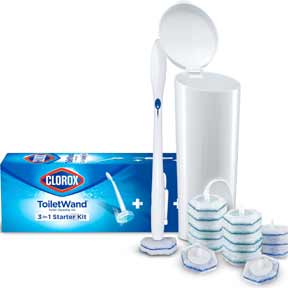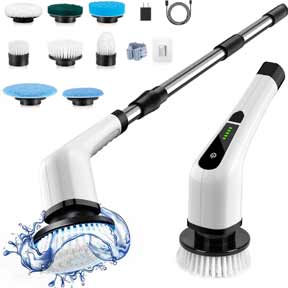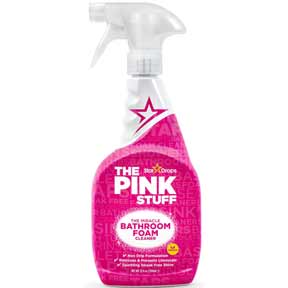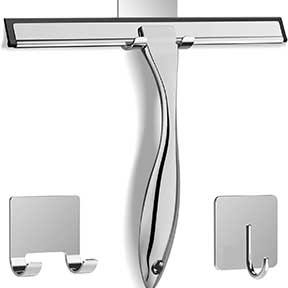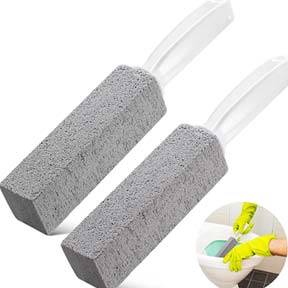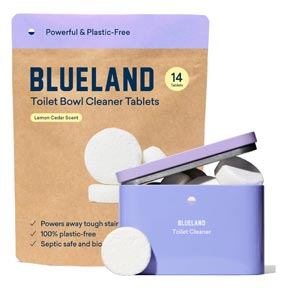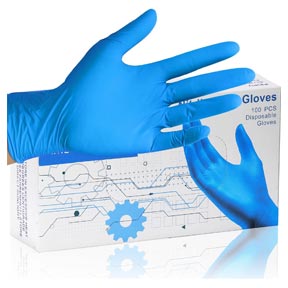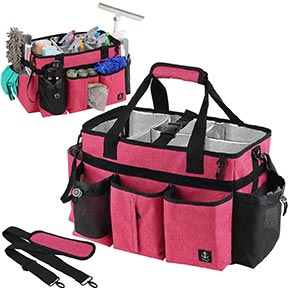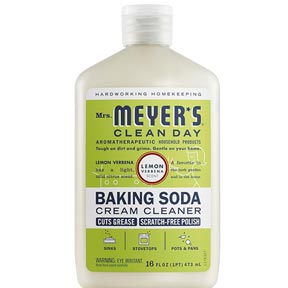Cleaning the Inside of a Toilet Tank

How to Clean and Disinfect a Toilet Tank.
How to Clean the Inside of Your Toilet Tank
Have you ever taken a good look inside your toilet tank? Probably not, unless the water in your toilet is running, become discolored, smelly, the chain or lever has broken or you decide to put in one of those tablet cleaners. We don’t often think about it but cleaning the inside of a toilet tank is part of the thrones cleanliness. If you live in an area with hard water, bacteria can grow in the dark water tank. Minerals and iron will feed bacteria which will grow into slimy blobs attached to the sides of the tank. The bacteria can be yellow, orange, red, brown, rusty colored, black or green. Dirt, grime and bacteria can cause odors, corrode the gaskets, and even plug up the toilet, so it is important to keep the inside of your toilet and the water in it clean. If your toilet tank is grungy and dirty, get your heavy duty cleaning gloves on. We’re going to take care of that dirt, grime, odors and bacteria!Step 1. Drain the Water From The Tank
Don’t stick your hands into a full tank to clean it. You need to drain the tank before you begin. First, shut off the water by turning the valve located on the bottom of the toilet near the back wall, and flush the toilet until all the water in the tank drains out. You may need to flush twice, just make sure to drain the tank completely.Step 2. Disinfecting the Inside of a Toilet Tank
Disinfect the tank to remove germs and bacteria. Spray the inside of the tank with a disinfectant like Lysol or chlorine bleach. Let the disinfectant sit for about a half an hour before continuing with your cleaning job.Step 3. Removing Heavy Bacteria Build Up
If you have a large amount of slimy yuck left after the water has drained from the tank, you can spray (or pour) straight chlorine bleach on it. Be careful and don’t get the bleach on you or anything other than the inside of the toilet tank. The chlorine bleach will not just sterilize the tank, it will break up and liquefy bacteria too. Then run a gallon or two of plain cold water through the tank and toilet and flush until all of the bleach has been flushed through the toilet and it’s gone from the tank.Step 4. Removing Built Up Dirt and Grime
Put your gloves on and grab your toilet brush, or other plastic soft bristle brush to remove dirt and grime from the corners, crevices and along the walls of the toilet tank.Step 5. Removing Mineral Deposits
All water has dissolved mineral solids in it at various percentages. Lime, calcium, magnesium are a few common minerals in our water that come to mind. Hard water mineral deposits will form on the inside of your toilet tank (and toilet bowl) given enough time and a high enough mineral level in the water. If you have mineral deposits in the tank, you can use plain white vinegar inside the tank (pour it into the empty tank up to the top of the overflow tube). Replace the lid and let the vinegar sit unused for 12 hours or longer if the deposits are heavy. You can also pour some straight vinegar in the toilet bowl if it has hard water build up too. Vinegar is a mild acid and will dissolve those deposits and make them easier to brush away. When the time is up, scrub the tank with a toilet brush and flush.Step 6. Removing Mold and Mildew
Most of the mold and mildew should have been removed with normal cleaning. You can keep it from coming back by keeping to a regular cleaning schedule or by using a chlorine bleach tablet at regular intervals.Step 7. Keeping the Inside of a Toilet Tank Clean
Regular use of cleaning product “tablets” that are dropped into the tank contain chemicals that can degrade your seals, gaskets and fixtures at a faster rate than normal. Once a rubber seal gets brittle and cracks the water will run continuously in the toilet until the assembly is replaced. Cleaning the inside of a toilet tanks only takes a few minutes and really only needs to be tackled once or twice a year, but it can go a long way to keeping your toilet in good working order, clean and odor free.Bathroom Cleaning
